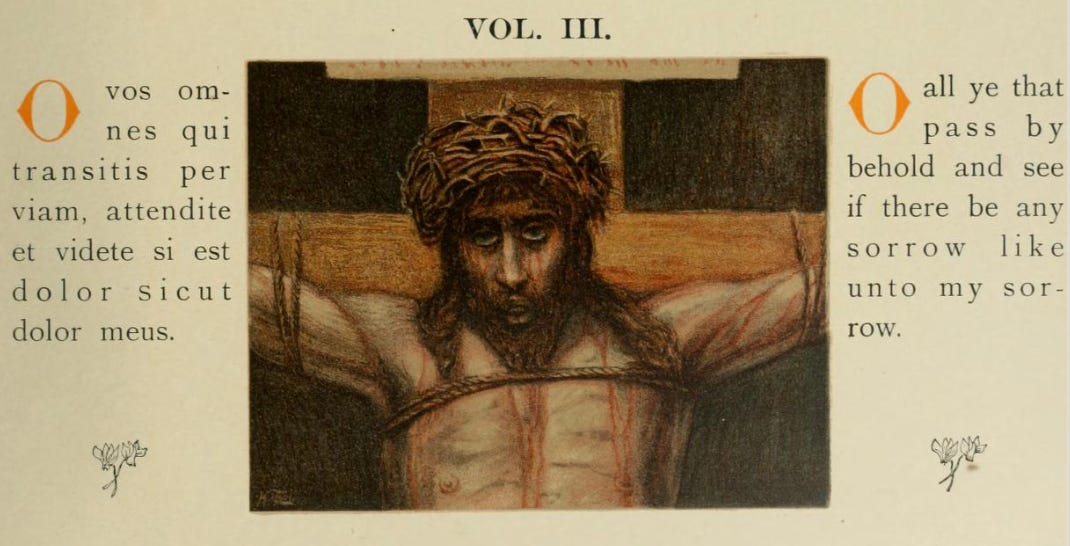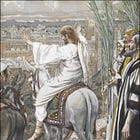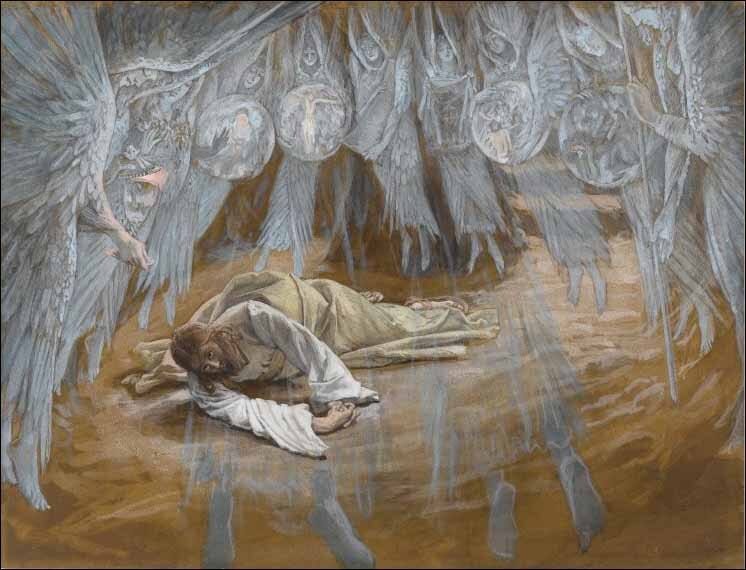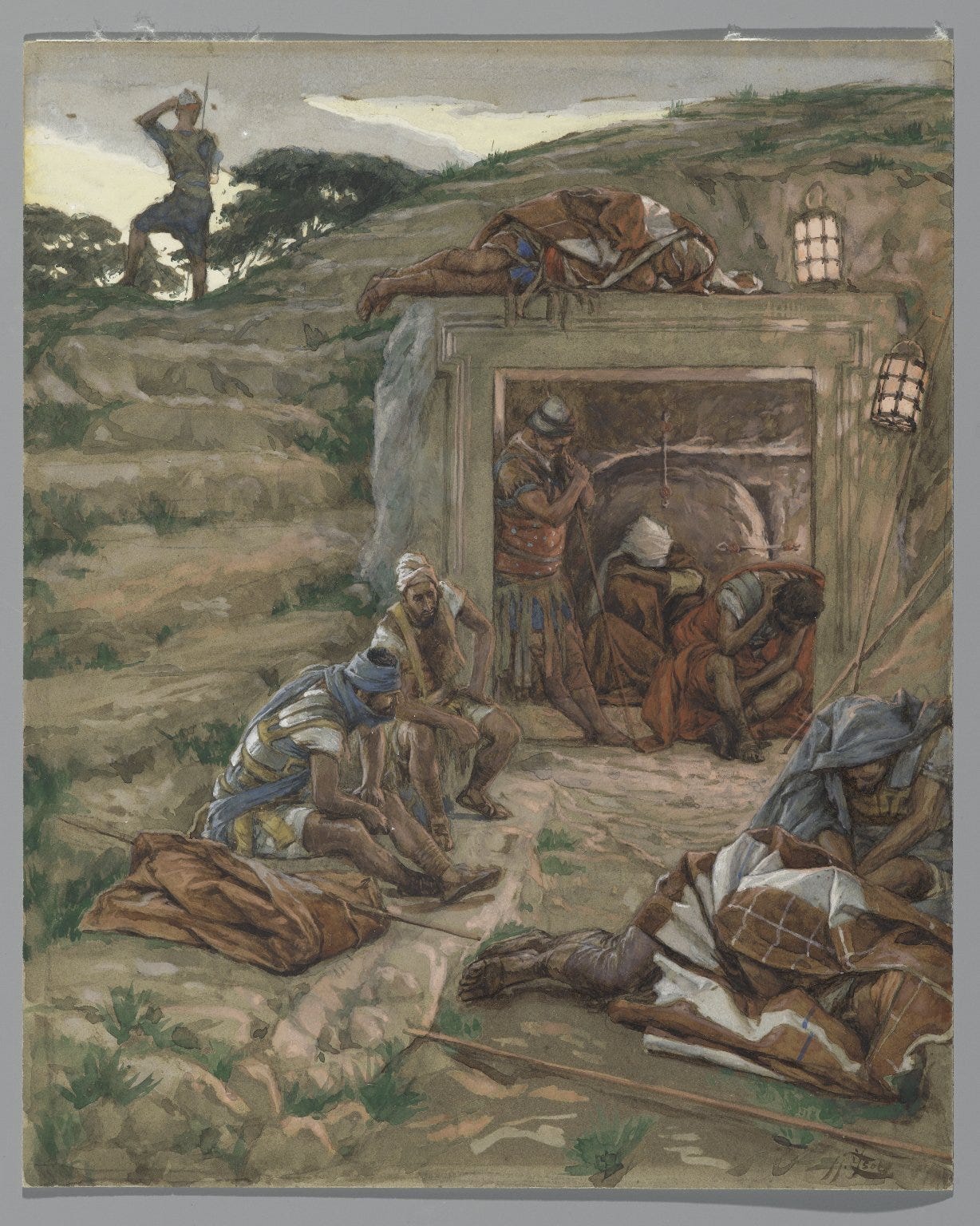Holy Week and Easter Illustrated with Commentaries by James Tissot
Tissot's paintings and commentaries—based on the Bible and the visions of Blessed Anne Catherine Emmerich—can help us walk closer with Our Lord during Holy Week.
This is a repost from last year with many changes. Links from 2024 pointed to articles of mine on Dappled Things Deep Down Things blog, each with a selection of illustrations that artist James Tissot painted of the events of Holy Week from the New Testament, which he published in his lavishly produced four volumes of The Life of Our Saviour Jesus Christ: three hundred and sixty-five compositions from the four Gospels in 1897 (originally in French in 1894 as La Vie de Notre Seigneur Jesus Christ).
You can go directly to the source and see all the main illustrations (and all the supplemental illustrations) and read all of Tissot’s extensive commentary for free in the “Tissot Bible” volumes at the Internet archive at archive.org. The meditations in Tissot’s commentary are heart-wrenching, taken from the Scriptures and the visions of Blessed Anne Catherine Emmerich about Christ’s life. The illustrations of the passion start here in Volume III.
My original Dappled Things blog posts contain commentaries for each day by Dom Guéranger. The posts also contain some relevant Bible verses, but they were not the translations based on the Douay Rheims Bible that Tissot used. On this revised page new links point you to new Substack posts, where the verses from the old series have been replaced with the verses Tissot himself included, as they were translated in the English editions of his Life of Christ. In addition, I am adding Tissot’s commentaries, one day at a time.
As I create a new Substack page for each day of Holy Week, I will come back and update this page with a link to the new page. Come back each day if you want to follow the events of Holy Week with Tissot with his commentaries and verses he used.
SCROLL DOWN FOR THE LINKS
The images in this series are downloaded from the Brooklyn Museum. "RIGHTS STATEMENT: No known copyright restrictions."
Holy Thursday or Maundy Thursday
Good Friday, Holy Friday, Great Friday, Great and Holy Friday, or Black Friday
Holy Saturday, Great and Holy Saturday, the Great Sabbath, Hallelujah Saturday, Saturday of the Glory, Black Saturday, Easter Eve, Joyous Saturday, the Saturday of Light, or Mega Sabbatun
Easter Sunday, Pascha, or Sunday of the Resurrection
After his conversion back to the Catholic faith of his childhood, French artist James Tissot visited the Holy Land three times to capture as best he could the people, scenes, and customs of the beautiful land where Jesus lived—before modern ways of life erased them forever. His third trip was to visit scenes from the Old Testament. Each time he returned to France after one of those trips, Tissot used gouache (opaque watercolor) to paint hundreds of small format illustrations full of minutely observed details rendered with hundreds of tiny brushstrokes. His use of the medium was unique as far as I know. Gouache paintings are usually done in a much looser style.
Tissot had been a dedicated realist artist who refused an invitation from his friend Edgar Degas to join the Impressionists. With his Biblical illustrations, he became a super-realist, portraying not only physical but spiritual events in what is often called a cinematic style. Tissot painted these illustrations in a kind of altered state in which the events from Christ’s life appeared to him as if in a vision.
These works of art, which were the fruits of his intense contemplation, can be a help to us as we devotedly accompany Our Lord during Holy Week.
For a more-complete introduction to the amazing unclassifiable works of the complex and unique artist James Tissot, you might want to read this article “Contrasting Visions Of Painter James Tissot, The Secular And Sometime Mystical Realist.”













